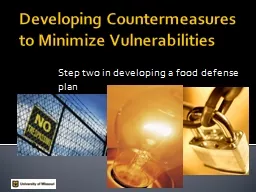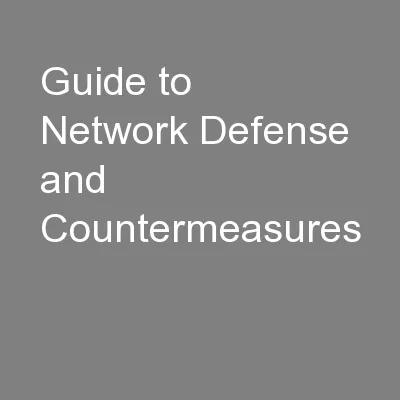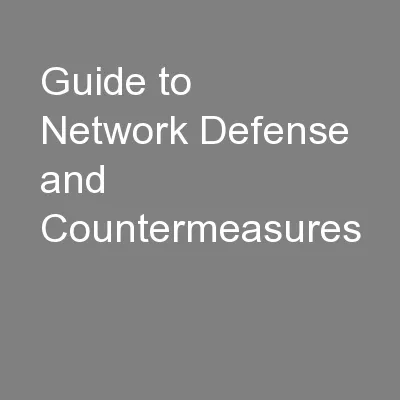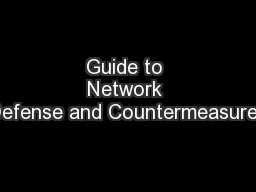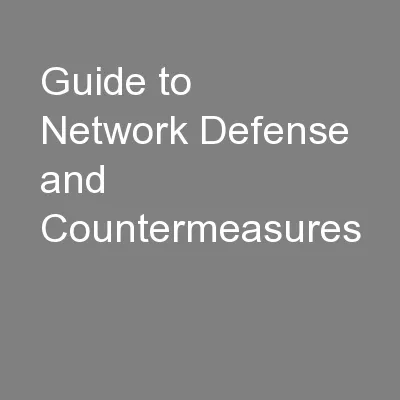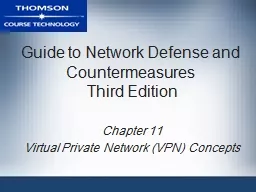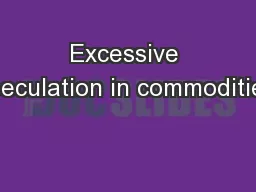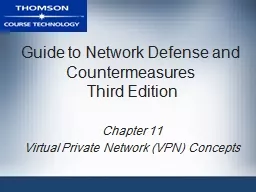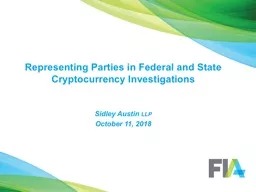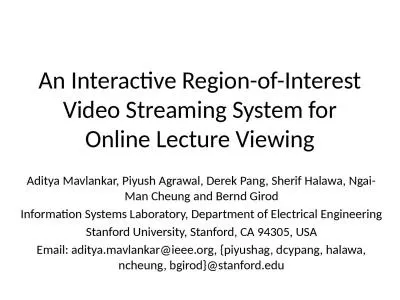PPT-Client Frame Tracking Countermeasures (CFTC)
Author : faith | Published Date : 2023-10-28
Date 202307 July 2023 Phil Hawkes Qualcomm Slide 1 Authors Summary Background Unencrypted predictable frame fields can enable client frame tracking identifying
Presentation Embed Code
Download Presentation
Download Presentation The PPT/PDF document "Client Frame Tracking Countermeasures (C..." is the property of its rightful owner. Permission is granted to download and print the materials on this website for personal, non-commercial use only, and to display it on your personal computer provided you do not modify the materials and that you retain all copyright notices contained in the materials. By downloading content from our website, you accept the terms of this agreement.
Client Frame Tracking Countermeasures (CFTC): Transcript
Date 202307 July 2023 Phil Hawkes Qualcomm Slide 1 Authors Summary Background Unencrypted predictable frame fields can enable client frame tracking identifying a set of frames for which a single client nonMLO nonAP STA or combination of a nonAP MLD is transmitter or intended receiver can allow tracking presence or location of the person using that client compromising privacy . Hyogo Prefectural Government. Agricultural & Environmental Affairs Department. Environmental Management Bureau. Water & Air Quality Control Division. Water Quality Group. IINO . Hiroo. 飯野 博夫. Step two in developing a food defense plan. No Bleu Cheese Please!. In 1984, members of an Oregon cult intentionally contaminated restaurant salad bars with Salmonella bacteria.. They were attempting to influence an election.. . Third . Edition. . Chapter . 7. Understanding Wireless Security. Guide to Network Defense and Countermeasures, 3rd Edition. 2. Security Concerns of Wireless Networking. In this section you will learn:. . Third . Edition. . Chapter . 8. Intrusion Detection . and Prevention Systems. Guide to Network Defense and Countermeasures, 3rd Edition. 2. Goals of an IDPS. Network intrusion. Attempt to gain unauthorized access to network resources. . Third . Edition. . Chapter . 5. Cryptography. Guide to Network Defense and Countermeasures, 3rd Edition. 2. Components of Cryptographic Protocols. Cryptography. : process of converting readable text, programs, and graphics into data that cannot be easily read or executed by unauthorized users. . Third . Edition. . Chapter 6. Wireless Network Fundamentals. Guide to Network Defense and Countermeasures, 3rd Edition. 2. Wireless Communications Primer. Wireless networking. : any exchange of data between computers and other devices that does not use cables. Tracking through. . Model-Averaged . Posterior Estimation. Seunghoon. Hong* . Suha. . Kwak. . Bohyung. Han. Computer Vision Lab.. Dept. of Computer Science and Engineering . POSTECH. Robust estimation of accurate . . Third . Edition. . Chapter . 11. Virtual Private Network (VPN) Concepts. Guide to Network Defense and Countermeasures, Second Edition. 2. Objectives. Explain basic VPN concepts. Describe encapsulation in VPNs. some Dodd-Frank remedies. Steve Suppan. Civil Society Forum . April 15, 2011. Overview. Derivatives market price formation vs. price transmission to retail food prices . Basic concepts in commodity futures markets. Benefits of Call Tracking. Accessing Call Tracking Dashboards. Enabling Call Recording. Requesting Additional Call Tracking Numbers. Call Tracking Overview. Consumer calls . ABC Heating & Cooling. A Host of Regulators. 1. Wide Range of Issues to Monitor. Regulators continue to focus on fraud, manipulation and safety/reliability violations. Technical violations of . agency/market . rules regardless of intent are leading to burdensome inquiries and bigger . . Third . Edition. . Chapter . 11. Virtual Private Network (VPN) Concepts. Guide to Network Defense and Countermeasures, Second Edition. 2. Objectives. Explain basic VPN concepts. Describe encapsulation in VPNs. Representing Parties in Federal and State Cryptocurrency Investigations Sidley Austin llp October 11, 2018 TABLE OF CONTENTS Range of Investigations – CFTC, NFA and Futures Exchanges 3 Aditya . Mavlankar. , . Piyush. Agrawal, Derek Pang, Sherif . Halawa. , Ngai-Man Cheung and Bernd . Girod. Information Systems Laboratory, Department of Electrical Engineering. Stanford University, Stanford, CA 94305, USA.
Download Document
Here is the link to download the presentation.
"Client Frame Tracking Countermeasures (CFTC)"The content belongs to its owner. You may download and print it for personal use, without modification, and keep all copyright notices. By downloading, you agree to these terms.
Related Documents

